This article was co-authored by World Health Organization and by wikiHow staff writer, Danielle Blinka, MA, MPA. The World Health Organization (WHO) is a specialized agency of the United Nations responsible for international public health. Founded in 1948, the World Health Organization monitors public health risks, promotes health and well-being, and coordinates international public health cooperation and emergency response. The WHO is currently leading and coordinating the global effort supporting countries to prevent, detect, and respond to the COVID-19 pandemic.
There are 12 references cited in this article, which can be found at the bottom of the page.
wikiHow marks an article as reader-approved once it receives enough positive feedback. In this case, 85% of readers who voted found the article helpful, earning it our reader-approved status.
This article has been viewed 321,428 times.
With reports about the novel coronavirus (COVID-19) dominating the news cycle, you may be worried about getting sick. Fortunately, you can take steps to protect yourself to reduce your risk of illness.[1] However, it’s important to take your symptoms seriously if you think you might be sick. If you’re worried you have COVID-19, stay home and contact your doctor virtually to find out if you need testing and treatment. Check your symptoms with the list below and learn what steps to take if you get diagnosed with COVID-19.
Steps
Watching for Symptoms
-
1Check for respiratory symptoms such as a cough. Since COVID-19 is a respiratory infection, a cough, with or without mucus, is a common symptom. However, a cough could also be a symptom of allergies or a different respiratory infection, so try not to worry. Call your doctor if you think your cough might be caused by COVID-19.[2]
- Consider if you’ve been around someone who was sick. If so, you’re more likely to have contracted what they had. However, do your best to stay away from sick people.
- If you’re coughing, keep your distance from people who have decreased immune systems or have high risks for complications, such as those over 65-years-old, newborns, children, pregnant women, and those who are on immunosuppressants.
-
2Take your temperature to see if you have a fever. Since fever is a common symptom of COVID-19, always check your temperature if you're worried you contracted the virus. A fever over 100.4 °F (38.0 °C) could be a sign that you have COVID-19 or another infection. If you have a fever, call your doctor to discuss your symptoms.[3]
- If you have a fever, you’re likely contagious, so avoid contact with other people.
Advertisement -
3Get medical care if you have breathing problems or shortness of breath. COVID-19 can cause trouble breathing, which is always a serious symptom. Contact your doctor immediately or get emergency medical care if you’re having difficulty breathing. You may have a serious infection, such as COVID-19.[4]
- You may need additional treatments for breathing problems, so always consult your doctor for shortness of breath.
Tip: COVID-19 causes pneumonia in some patients, so don’t hesitate to contact your doctor if you’re having breathing issues.[5]
-
4Recognize that a sore throat and runny nose may indicate a different infection. While COVID-19 is a respiratory infection, it doesn’t usually cause a sore throat or runny nose. Its most common symptoms are cough, fever, and shortness of breath. Other symptoms of a respiratory infection likely indicate that you have another illness, like the common cold or the flu. Call your doctor to be sure.[6]
- It’s understandable that you’d be nervous about COVID-19 if you're feeling sick. However, you probably don’t need to worry if you’re having symptoms other than fever, cough, and shortness of breath.
Getting an Official Diagnosis
-
1Call your doctor if you suspect you have COVID-19. Tell your doctor that you’re having symptoms and ask if you need to come in for an exam. Your doctor may recommend you stay home and rest. However, they could ask you to get a viral test to confirm a possible COVID-19 infection. Follow your doctor’s instructions so you can recover and are less likely to spread the infection.[7]
- An antibody test is another type of test that can tell you if you had a past infection. Antibody tests cannot be used to diagnose a current infection.
Tip: Tell your doctor if you’ve recently traveled or come into contact with someone who is sick. This can help them determine if your symptoms may be caused by COVID-19.
-
2Undergo a lab test for COVID-19 if your doctor recommends it. Your doctor may do a nasal swab of your mucus or a blood test to check for an infection. This will help them rule out other infections and possibly confirm COVID-19. Allow the doctor to take a nasal swab or blood draw so they can make a proper diagnosis.[8]
- Getting a nasal swab or blood draw shouldn’t hurt, but you may experience some discomfort.
Did You Know? Your doctor will ask you to isolate yourself in a room away from other household members and notify the Center for Disease Control and Prevention (CDC) while they test and track your illness. Also be sure to avoid sharing items like utensils, towels and cups with others and wear a mask if you are in close proximity to others.[9]
-
3Get emergency medical treatment if you have difficulty breathing. A serious COVID-19 infection can cause complications such as pneumonia. If you’re having trouble breathing, go to your doctor, an urgent care center, or an emergency room immediately. If you’re alone, call for help so you arrive safely.[10]
- Breathing problems could be a sign that you’re having complications, and your doctor can help you get the help you need to recover.
Treating COVID-19
-
1Stay home so you won’t risk infecting others. If you have respiratory symptoms, you may be contagious, so don’t leave your home while you’re feeling ill. Make yourself comfortable at home while you recover from your illness. Additionally, tell people that you’re sick so they won’t visit.[11]
- If you go to the doctor, wear a face mask to prevent spreading the virus.
- Check with your doctor to find out when it’s safe for you to return to your normal routine. You may be contagious for up to 14 days.[12]
-
2Rest so your body can recover. The best thing you can do for yourself is to rest and relax while your body fights the infection. Lie down on your bed or your couch with your upper body propped up on pillows. Additionally, keep a blanket with you in case you get cold.[13]
- Raising your upper body will help you avoid coughing fits. If you don’t have enough pillows, use folded blankets or towels to prop yourself up.
-
3Take over-the-counter pain and fever reducers. COVID-19 often causes body aches and fever. Fortunately, an over-the-counter medicine like ibuprofen (Advil, Motrin), naproxen (Aleve), or acetaminophen (Tylenol) will help. Check with your doctor to make sure it’s safe for you to take an over-the-counter pain reliever. Then, take your medication as directed on the label.[14]
- Do not give aspirin to children or teens under 18 since it can cause a potentially fatal condition called Reye’s Syndrome.
- Don’t take more medication than the label says is safe, even if you’re not feeling better.
-
4Use a humidifier to soothe your airways and thin out mucus. You’ll likely have mucus drainage, and a humidifier can help. The mist from the humidifier will moisten your throat and airways, which can help thin out your mucus.[15]
- Follow the directions on your humidifier to use it safely.
- Wash your humidifier thoroughly with soap and water between uses so you don’t accidentally get mildew in it.
-
5Consume lots of fluids to help your body heal. Fluids help your body fight off the infection and thin out your mucus. Drink water, hot water, or tea to help keep you hydrated. Additionally, eat broth-based soups to increase your fluid intake.[16]
- Warm fluids are your best bet and may also help soothe your sore throat. Try hot water or tea with a squeeze of lemon and a spoonful of honey.[17]
Expert Q&A
-
QuestionWhat are the symptoms of COVID-19?
 Ni-Cheng Liang, MDDr. Ni-Cheng Liang is a board certified Pulmonologist and the Director of Pulmonary Integrative Medicine at Coastal Pulmonary Associates affiliated with the Scripps Health Network in San Diego, California. She also serves as a Voluntary Assistant Professor of Medicine at the University of California San Diego School of Medicine while volunteering for the UCSD Medical Student-Run Free Clinic for uninsured patients. With over 15 years of experience, Dr. Liang specializes in pulmonary and respiratory medical concerns, mindfulness teaching, physician wellness, and integrative medicine. Dr. Liang received her Doctor of Medicine (MD) from the University of Maryland School of Medicine. Dr. Liang was voted as a San Diego Top Doctor in 2017 and 2019. She was also awarded the 2019 American Lung Association San Diego Lung Health Provider of the Year.
Ni-Cheng Liang, MDDr. Ni-Cheng Liang is a board certified Pulmonologist and the Director of Pulmonary Integrative Medicine at Coastal Pulmonary Associates affiliated with the Scripps Health Network in San Diego, California. She also serves as a Voluntary Assistant Professor of Medicine at the University of California San Diego School of Medicine while volunteering for the UCSD Medical Student-Run Free Clinic for uninsured patients. With over 15 years of experience, Dr. Liang specializes in pulmonary and respiratory medical concerns, mindfulness teaching, physician wellness, and integrative medicine. Dr. Liang received her Doctor of Medicine (MD) from the University of Maryland School of Medicine. Dr. Liang was voted as a San Diego Top Doctor in 2017 and 2019. She was also awarded the 2019 American Lung Association San Diego Lung Health Provider of the Year.
Board Certified Pulmonologist The most common symptoms of COVID-19 include fever, sore throat, cough, shortness of breath, and chest pain.
The most common symptoms of COVID-19 include fever, sore throat, cough, shortness of breath, and chest pain.
Warnings
- COVID-19 can cause serious complications, so call your doctor immediately if you have shortness of breath or you feel like you’re getting worse.[20]⧼thumbs_response⧽
References
- ↑ https://www.cdc.gov/coronavirus/2019-ncov/prevent-getting-sick/prevention.html
- ↑ https://www.cdc.gov/coronavirus/2019-ncov/symptoms-testing/symptoms.html
- ↑ https://www.mayoclinic.org/diseases-conditions/coronavirus/symptoms-causes/syc-20479963
- ↑ https://www.cdc.gov/coronavirus/2019-ncov/symptoms-testing/symptoms.html
- ↑ https://www.mayoclinic.org/diseases-conditions/coronavirus/symptoms-causes/syc-20479963
- ↑ https://www.mayoclinic.org/diseases-conditions/coronavirus/symptoms-causes/syc-20479963
- ↑ https://www.mayoclinic.org/diseases-conditions/coronavirus/symptoms-causes/syc-20479963
- ↑ https://www.mayoclinic.org/diseases-conditions/coronavirus/diagnosis-treatment/drc-20479976
- ↑ https://www.cdc.gov/coronavirus/2019-ncov/if-you-are-sick/quarantine.html
- ↑ https://www.cdc.gov/coronavirus/2019-ncov/symptoms-testing/symptoms.html#seek-medical-attention
- ↑ https://www.cdc.gov/coronavirus/2019-ncov/if-you-are-sick/steps-when-sick.html
- ↑ https://www.who.int/docs/default-source/coronaviruse/situation-reports/20200402-sitrep-73-covid-19.pdf
- ↑ https://www.cdc.gov/coronavirus/2019-ncov/if-you-are-sick/steps-when-sick.html
- ↑ https://www.mayoclinic.org/diseases-conditions/coronavirus/diagnosis-treatment/drc-20479976
- ↑ https://www.cdc.gov/coronavirus/general-information.html
- ↑ https://www.mayoclinic.org/diseases-conditions/coronavirus/diagnosis-treatment/drc-20479976l
- ↑ https://www.mayoclinic.org/diseases-conditions/sore-throat/diagnosis-treatment/drc-20351640
- ↑ https://www.cdc.gov/coronavirus/2019-ncov/hcp/clinical-guidance-management-patients.html
- ↑ https://www.cdc.gov/coronavirus/2019-ncov/prevent-getting-sick/prevention.html
- ↑ https://www.mayoclinic.org/diseases-conditions/coronavirus/symptoms-causes/syc-20479963
About This Article
If you think you may have been exposed to coronavirus, here's what to do. First, monitor the symptoms you're experiencing. Coronavirus presents as a respiratory infection. Common symptoms include coughing and a runny nose. You may also experience a headache, sore throat, and fever. If you’re experiencing any combination of these symptoms, visit your doctor so you can be tested for the virus. According to the World Health Organization, coronavirus can also cause shortness of breath and difficulty breathing. If you’re having difficulty breathing, seek emergency medical attention immediately. Understand that many of these symptoms can indicate less acute respiratory infections like the common cold or flu. However, if you think you may have been exposed to the coronavirus, contact a medical professional immediately to determine if you need to be tested. If you live in the United States, the CDC will administer the 2019 novel coronavirus test. If you live outside the United States, contact your national public health organization for details on how to get tested.

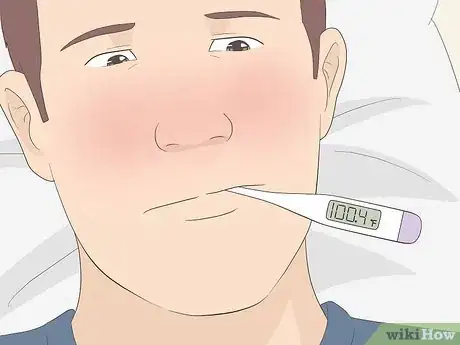

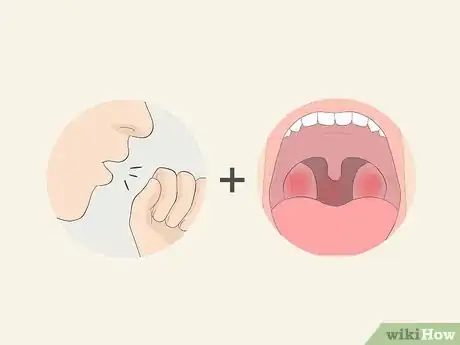


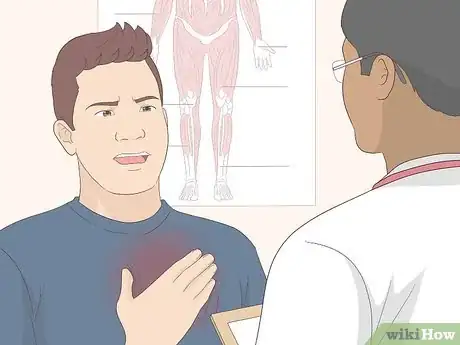


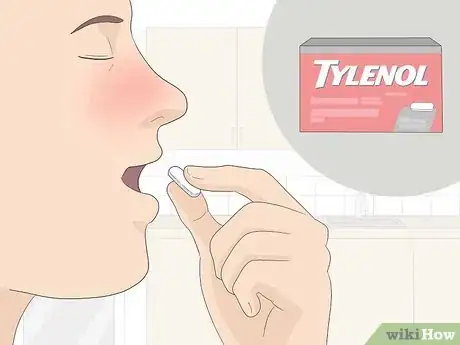


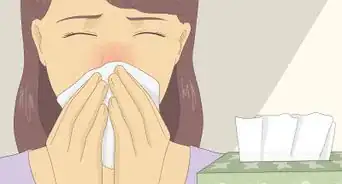


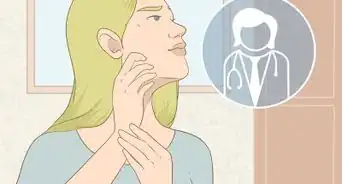

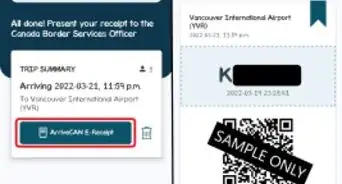

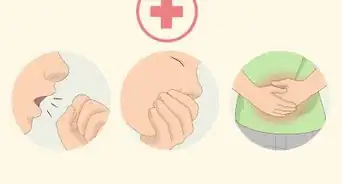


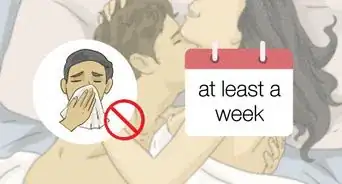










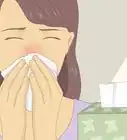






































Medical Disclaimer
The content of this article is not intended to be a substitute for professional medical advice, examination, diagnosis, or treatment. You should always contact your doctor or other qualified healthcare professional before starting, changing, or stopping any kind of health treatment.
Read More...